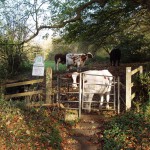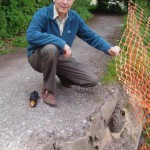
In 2009 the occupants of Smallcombe Farm applied to B&NES Council to divert the footpath which runs through their farmyard.
This started off a legal process called a Public Path Order. To divert a footpath an alternative must be provided which is substantially as convenient and enjoyable by the public and the diversion must be of benefit to the landowner. The process is run by the local council, with all of the costs bourne by the applicant.
While the application was made in 2009, no action has been taken by the council. This is shown in section 4.2 of an item brought to the Regulatory Committee this month. The papers were published here this week. Council staff have not processed any Public Path Orders in a number of years, and the Smallcombe application is several places down the waiting list. Were the aplication to be processed, the public would be consulted and the application would be apear before the Regultory Committee. Were any objections recieved an inspector appointed by the Secretary of State would arbitrate.
Perhaps frustrated by the lack of progress, the applicants have provided an alternative path already, and the National Trust, the landowners, have diverted their popular Skyine Walk onto it. This is signed on the ground and on the public map, here. The new route is labelled as a ‘permissive path’; one which is not recognised as a footpath, but along which the public have been given permission to walk. The stepped path to the farmyard remains a legal footpath, but it is not signposted as well as it used to be.
Currently walkers have the advantage of two different footpaths to Smallcombe, and both are used by walkers (and their dogs). This is likely to remain the case for many years yet, as the council footpath team have a low priority for funding during straightened times.









